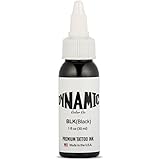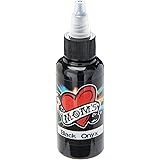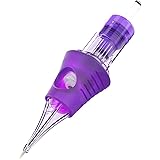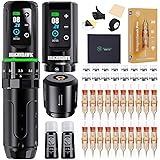For anyone who loves to put pen to paper, the desire to make your words truly pop is a familiar one. Standard fonts and plain lettering, while functional, can sometimes feel a little… ordinary. What if you could infuse your writing with personality, depth, and a touch of artistic flair without needing advanced calligraphy skills?
That’s where the magic of hand lettering ideas comes into play, as demonstrated in the insightful video above. It dives into over 50 different lettering enhancements designed to transform your ordinary words into captivating visual elements. These aren’t just new fonts; they’re versatile tricks you can apply to almost any existing writing style, from elegant cursive to bold capital letters, adding impact and making your words truly unforgettable.
Elevate Your Craft: Understanding Lettering Enhancements
Lettering enhancements are simple yet powerful additions that “jazz up” standard lettering. Think of them as special effects for your words. They can range from subtle shading that gives a 3D illusion to dynamic patterns that fill your letters with energy. The beauty of these techniques is their universal applicability, meaning you can mix and match them across various fonts and styles to create truly unique compositions.
Imagine you’re designing a heading for your bullet journal, crafting a special card, or even just jotting down notes. Applying a simple lettering enhancement can take your work from flat to fantastic, catching the eye and conveying emotion beyond the text itself. It’s about adding a layer of visual interest that amplifies your message and expresses your creativity.
Mastering Depth and Dimension with Drop Shadows
Drop shadows are arguably one of the most popular and effective ways to add instant depth to your hand lettering ideas. They create the illusion that your letters are lifting off the page, giving them a tangible, three-dimensional quality. The video above showcases several variations, each with its own unique aesthetic impact.
- The Floating Drop Shadow: This technique involves drawing a thin line slightly offset from the main letters, typically to the right or bottom. It creates a subtle lift, suggesting a delicate, airy presence. Imagine if your letters were whispering just above the paper.
- Traditional Drop Shadow: More substantial, this shadow is attached to the main letters, giving them a solid, grounded feel. It makes letters appear to hover, casting a distinct shade that anchors them to the design. This is perfect for a classic, bold statement.
- Hollow Drop Shadow: Similar to the floating shadow but attached, this style uses an outline to define the shadow area. It’s like picturing a ghost of your letter just behind and below, offering a modern, minimalist take on depth.
- Block Lettering & Hatching: Reminiscent of childhood block letters, this method involves extending small “ticks” from each corner of your letters and connecting them to form a block. Filling these blocks with diagonal hatching adds texture and a graphic, comic-book-like quality. Imagine a title for a nostalgic project, instantly drawing attention.
- 3D & Dotted Drop Shadows: Repeating the floating drop shadow multiple times creates a more pronounced 3D effect, adding significant visual weight. Alternatively, a dotted floating shadow introduces a dainty, almost whimsical feel, making your lettering seem light and playful.
- Perspective Drop Shadows: By choosing a single vanishing point and connecting all letter corners to it, you can create the illusion of extreme depth, as if your letters are receding far into the distance. This technique is incredibly dramatic and visually striking, ideal for making a bold impact.
Experimenting with different line weights, colors, and shadow placements can drastically alter the mood and emphasis of your lettering, transforming simple words into captivating art.
Defining Space with Inner and Outer Lines
Beyond shadows, the strategic placement of lines can dramatically redefine the appearance of your lettering. Inner and outer lines create boundaries, highlights, and unique textural effects, offering more dimensions to your hand lettering ideas.
Inner Line Lettering Variations
Inner lines are drawn within the confines of your letters, adding detail and highlights.
- Simple Inner Line: A clean line drawn inside your letters, often in a contrasting color like white on a darker base. This instantly brightens the lettering and gives it a crisp finish. Imagine a neon sign effect with minimal effort.
- Highlighting Inner Lines: Placing lines specifically on the top corners or thicker portions of letters creates a highlight effect, making them appear rounded and bouncy, like classic bubble letters. This adds a playful, three-dimensional sheen.
- Dashed and Dotted Inner Lines: Introducing dashed or dotted lines inside your letters can mimic stitching or create a “road-like” effect. This adds a unique texture and suggests an artisan touch. Imagine if your letters were embroidered onto fabric.
- Marquee Lettering: Larger, strategically placed inner dots, especially when combined with a drop shadow, can evoke the look of marquee lights. This is perfect for creating a glamorous or festive atmosphere.
Outer Outline Techniques
Outer outlines, as their name suggests, trace the perimeter of your letters, providing definition and an exciting graphic edge.
- Bubble Outline: A soft, rounded line drawn around your lettering gives it a whimsical, cartoon-like appearance. Repeating this outline multiple times enhances the fun and funky vibe, making your letters seem to bounce.
- Outlines with Drop Shadows: Combining an outer outline with any of the drop shadow techniques creates a multi-layered effect that makes your letters stand out even more. The outline acts as a frame, enhancing the depth created by the shadow. This is an excellent way to make headings pop on posters or journal spreads.
- Offset & Dashed Outlines: An outline that’s slightly offset (e.g., lower and to the left) adds a dynamic, almost glitch-like effect, giving your lettering a modern edge. Dashed or dotted outlines, reminiscent of stitching, imbue your letters with a crafty, handmade feel, perfect for scrapbooking or unique labels.
These techniques show how a simple line, whether internal or external, can completely transform the character and visual weight of your lettering.
Infusing Personality with Patterns and Textures
Why leave the inside of your letters blank when you can fill them with captivating patterns and textures? This category of lettering enhancements allows for immense personalization and creativity, turning your words into canvases.
- Hatched Lines: Simple diagonal hatched lines are a classic way to add texture and a graphic feel. Varying the direction or density of these lines can create different moods, from subtle shading to bold statement.
- Geometric Fills: Polka dots, stars, hearts, or other small shapes can fill your letters, adding a playful and whimsical touch. The choice of pattern can reflect the theme of your writing, making it instantly recognizable and delightful. Imagine filling a title with tiny hearts for a love letter.
- Stripes (Horizontal & Directional): Horizontal stripes offer a clean, modern aesthetic. Playing with their placement—not going to the edge, or making them fade towards the bottom—adds an extra layer of sophistication. For a truly dynamic look, orient stripes to follow the natural direction of each stroke within the letter, creating a sense of movement.
- Fading Effects: Using white pens to create stripes that get progressively closer together towards the bottom can mimic a fading effect, giving your letters an ethereal or distressed look. This technique is particularly effective for titles that need a soft, dreamy quality.
These pattern fills offer a fantastic opportunity to integrate themes and express unique personality directly into your hand lettering, moving beyond just the shape of the letters themselves.
Advanced Techniques: From Serifs to 3D Ribbons
As you become more comfortable with basic lettering enhancements, you can explore more intricate techniques that add sophisticated details and impressive optical illusions to your creative writing.
Adding Serifs and Fading Effects
- Serifs: While often associated with traditional typography, you can manually add serifs (those small decorative strokes at the end of letter lines) to your existing letters. This instantly gives a more formal, classic, or elegant appearance, transforming a simple sans-serif into a more refined style.
- Half-Full & Fading Upwards: Filling letters halfway, often with an inline that gradually disintegrates into dots upwards, creates a unique fading effect. This can suggest a feeling of emergence or dissipation, adding a subtle narrative to your lettering. Imagine a word appearing out of mist.
Ombre and Emphasis Lines
- Ombre Effects: Using a darker marker over a lighter one or creating vertical lines that fade from solid to sparse can achieve beautiful ombre effects. This gradient transition adds a professional, artistic touch, making your letters appear to shift color or density seamlessly.
- Confetti & Pointillism Drop Shadows: Similar to the confetti lettering discussed earlier (where dots burst from the outlines), you can create a pointillism-style drop shadow. By arranging dots diagonally downwards from your letters, you create a dynamic, energetic shadow that suggests movement and sparkle.
- Movement & Sunray Bursts: Adding small dashes that follow the curves of your letters can create an illusion of motion, making your words feel alive. Similarly, sunray bursts emanating from letter corners add emphasis and a cheerful, radiant glow, perfect for highlighting important words.
Creating 3D Overlaps and Ribbon Effects
- 3D Overlaps: By adding white lines wherever letter strokes overlap, you can create a powerful 3D effect that makes it look like the strokes are weaving over and under each other. This gives your lettering incredible depth and realism, making each letter a sculpted object.
- Ribbon Lettering: This advanced technique involves adding extra lines and strategic shading to make your letters appear like twisted ribbons. It’s a visually complex effect that lends a luxurious, flowing quality to your words, transforming them into elegant decorative elements.
These more advanced lettering enhancements require a bit more practice but offer incredibly rewarding results, pushing the boundaries of what you can achieve with simple tools.
Unlock More Creative Potential with Skillshare
Embarking on a creative journey, especially with hand lettering ideas and calligraphy, often benefits from structured learning and expert guidance. The video’s sponsor, Skillshare, is an excellent resource for anyone looking to deepen their artistic skills or explore new creative avenues.
Skillshare is an online learning community offering thousands of classes across various creative fields, including design, illustration, and, crucially, lettering and calligraphy. Whether you’re a complete beginner eager to learn the basics or an experienced artist looking for fresh inspiration and advanced techniques, Skillshare has a class for you. Many instructors are industry professionals, sharing their unique insights and processes.
The platform is designed to make learning accessible and affordable. A premium membership provides unlimited access to all high-quality classes, allowing you to learn at your own pace and revisit lessons whenever you need a refresher. At less than $10 a month for an annual membership, it’s a remarkably cost-effective way to invest in your creative education – less than the price of two coffees each month for a wealth of knowledge. This makes it an invaluable tool for anyone passionate about honing their hand lettering and creative design capabilities.











